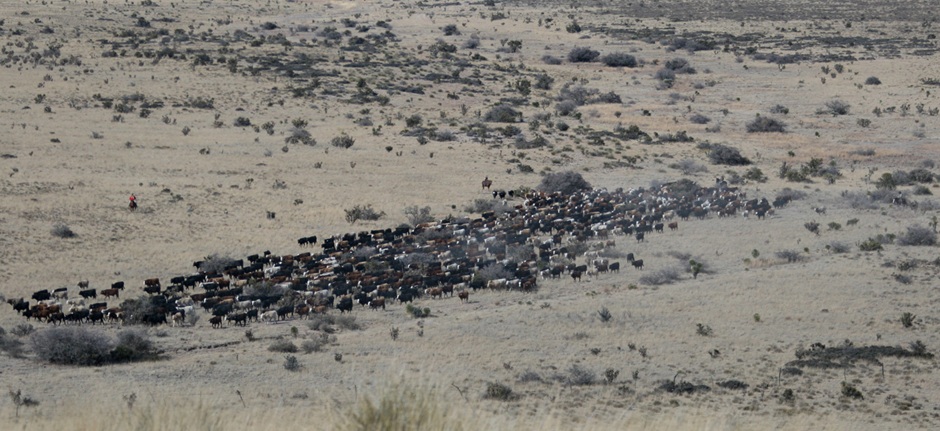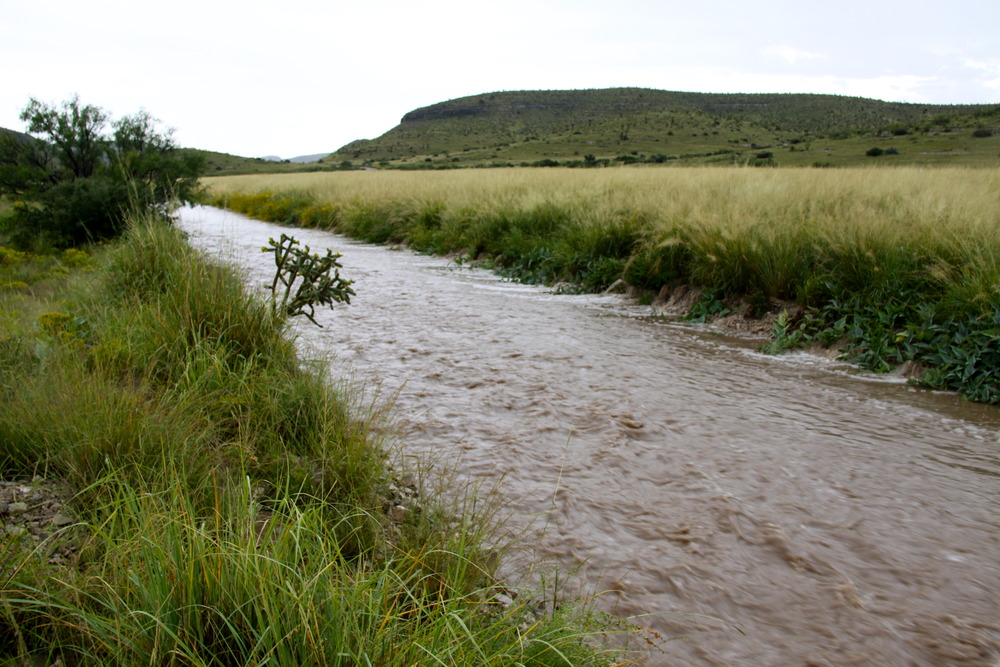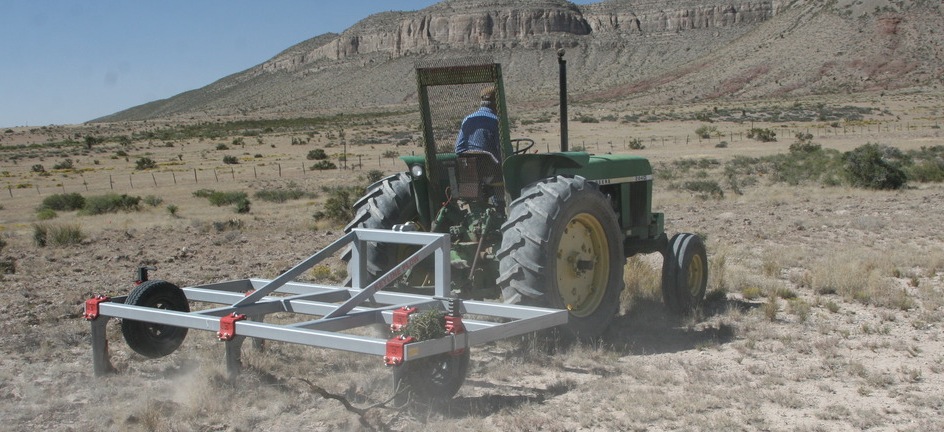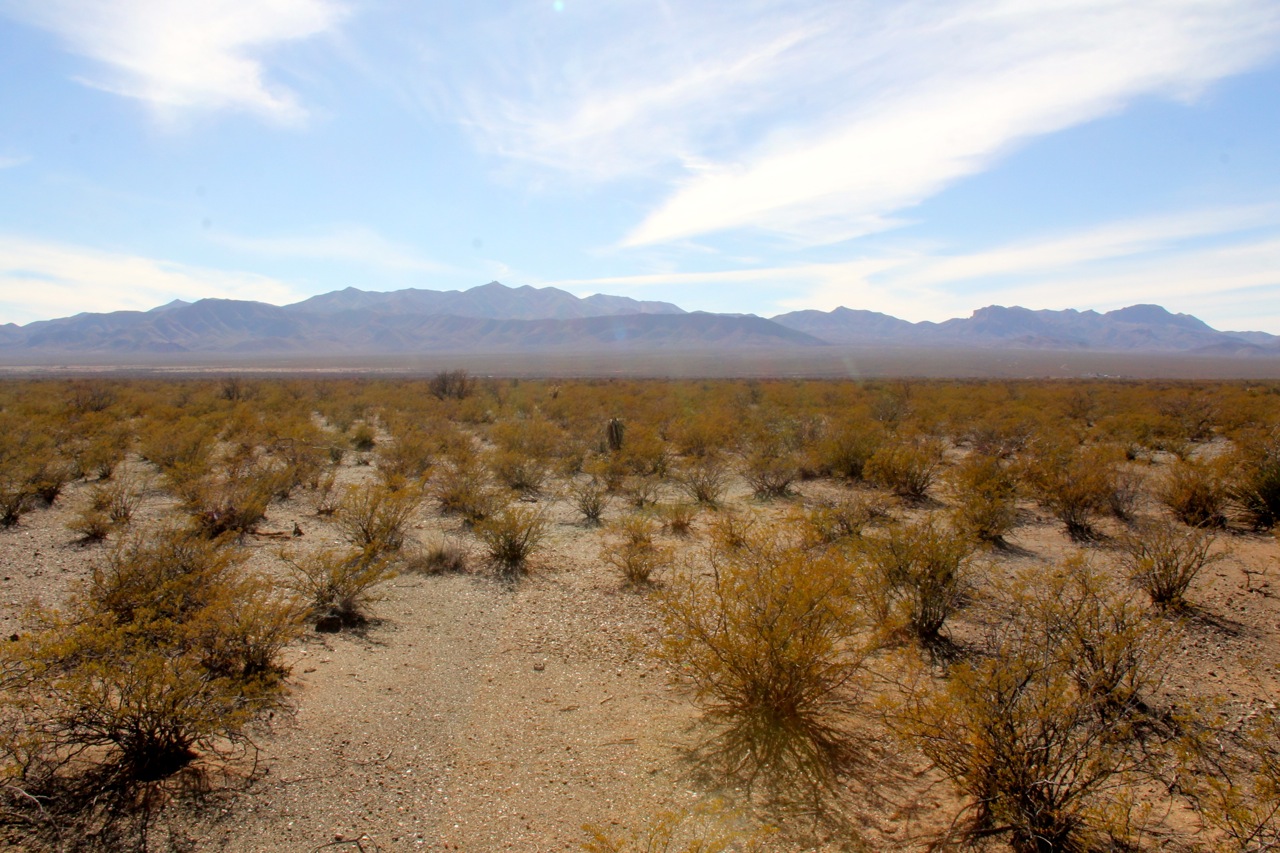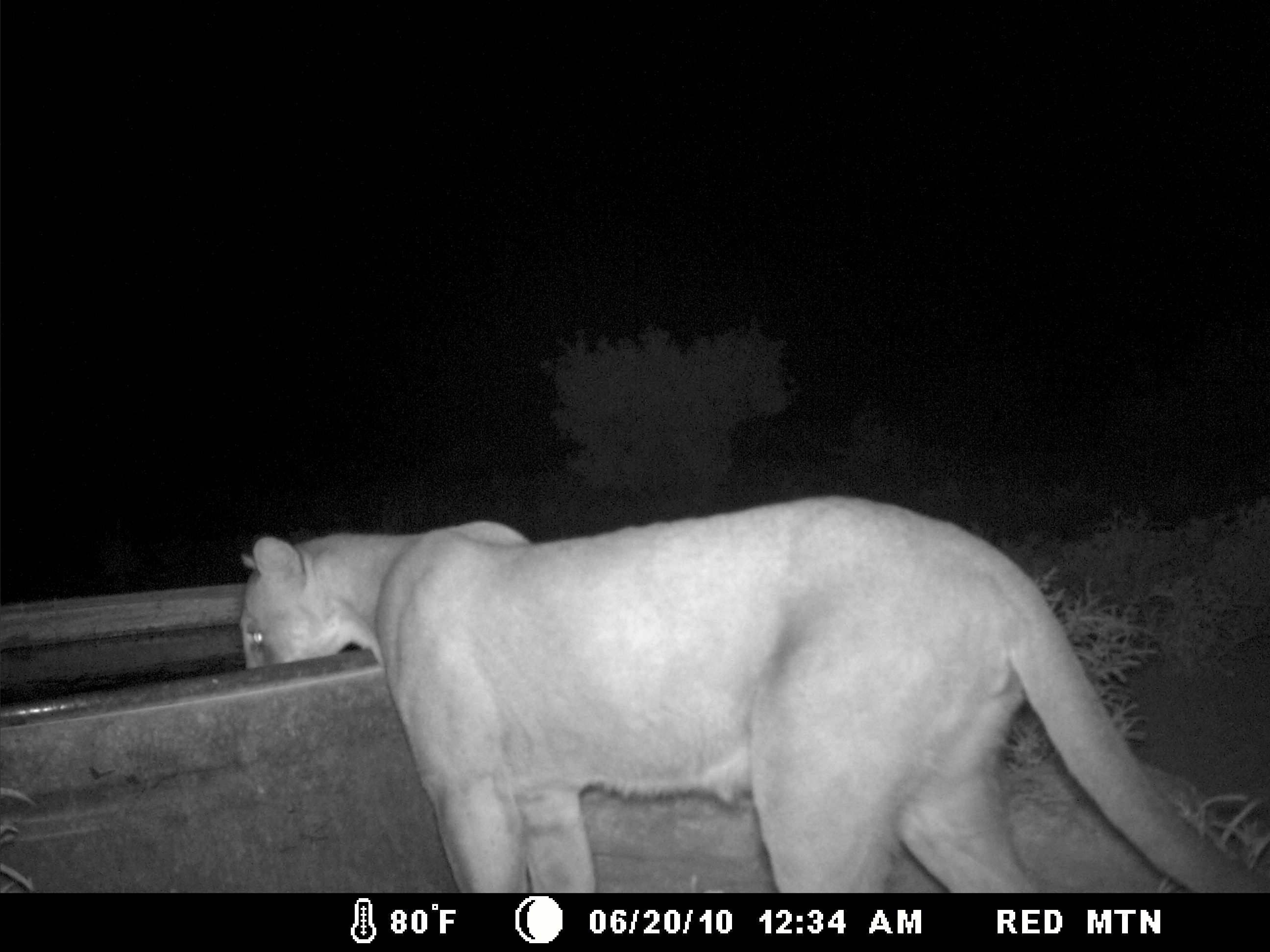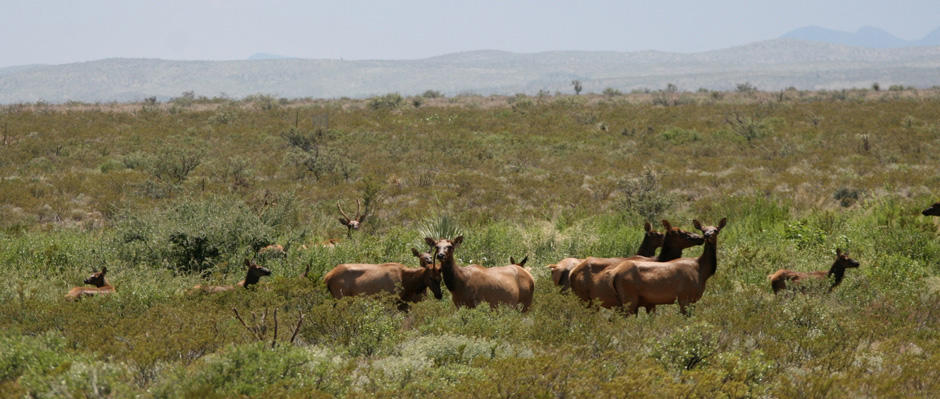Creosote Bush: An Unassuming But Ancient Form of Life All Around Us

Though sometimes regarded as a nuisance by residents of the arid Southwest, the creosote bush is a complex and fascinating plant – and creosote colonies constitute some of the oldest organisms known to inhabit the planet. The shrub-like plant’s scientific name is Larrea tridentata, and it is known by many names, including greasewood, perhaps mostly commonly, and gobernadora, or “governess,” in Spanish. The creosote’s story is one of survival, even in the worst of times.
The creosote is a native of the Mojave, Sonoran and Chihuahuan deserts, meaning it is found across almost all of the U.S. Southwest and the adjacent desert regions of northern Mexico, from the Pacific Ocean to the Pecos River Valley. An evergreen, the creosote keeps itself alive in part by inhibiting the growth of some nearby plants. At the same time, it is also a nursery for small cacti and other types of plants, and cacti can often be found clustered around the base of a creosote bush.
The plant is a perennial and very drought-tolerant; it uses all available water to sustain its branches and puts on small, yellow flowers as well as gray, fuzzy fruits. Its name comes from the creosote odor put off by the plant. The odor is caused by rainfall that penetrates the waxy coating of the creosote’s leaves, and Native Americans of the desert West, like more recent arrivals to the region, have always spoken of creosote as the smell of rain.
Though it is a native of the region, creosote is also regarded as invasive, and the plants tends to spread into soil that has been disturbed or into areas where overgrazing by livestock has taken place.
Creosote plants live for many years, and a plant’s offspring is a clone of the previous plant, meaning that a colony of creosote bushes is a single organism. At about 90 years old, a plant will crown and then die off, leaving a new plant spreading out from the old one. One seed will create numerous crown stems, which create a colony. The oldest known colony is the “King Clone,” which is located in the Mojave Desert in California. The King Clone is believed to be just shy of 12,000 years old, making it one of the oldest living organisms on Earth.
Creosotes have learned to extend their lives by storing water and preventing water loss by coating their leaves with a waxy film. The plant has become one of necessity to desert lands. It helps to prevent erosion and is the home and food base for over 60 species of insects and small creatures including beetles, millipedes, mice, jackrabbits and kangaroo rats. The creosote is also the only food source for 22 species of bees, which get their food from the yellow flowers the plant puts on throughout the year. These bees then help pollinate other plants and vital food sources in desert regions. Imagine what would happen to the food chain if the creosotes plants were to disappear completely!
Native American used creosotes to treat disease, with a balm made from the plant. The balm was used to treat chickenpox, tuberculosis, STDs, dysmenorrhea and snakebites. Creosote is currently being researched at as an anti-cancer treatment. Historically, many desert peoples have used the bitter leaves to make a tea, and it is still consumed to treat ailments such as fever, influenza, colds, upset stomach, gas, gout, arthritis, sinusitis, anemia, PMS, diarrhea, allergies, fungus infections and even autoimmune diseases such as AIDS. The plant also has antiseptic properties. Although U.S. officials discourage the medicinal use of the plant, which in medicinal applications has often referred to as chaparral, the plant is still commonly used for medicinal purposes in Mexico. Desert peoples also used the substance secreted by the plant as a sealant or glue. Prolonged use of the medicinal plant has been linked to some kidney or liver failure.
Though we might overlook the creosote bush for its commonness, there is more than meets the eye when it comes to this hardy and resourceful desert resident.
Sources: Tusconcitizen.com, UTEP, aggie-horticulture.tamu.edu
NOTE:
– This article originally appeared in the Hudspeth County Herald – August 30th edition, and was written by Carey Smith.
– Image is taken from the Wikipedia page on the King Clone.
A Better Way to ‘Manage’ Creosote
The article above is excellent. Far from being an enemy, creosote is an ancient and beneficial member of the plant community, which should logically remain in our deserts. Instead, it is often targeted for eradication.
As shown in this picture, we have had very good results in stimulating plant recovery in bare areas between creosote and tarbush stands on Circle Ranch.
We accomplished this by using cattle in high-density, infrequent “planned grazing” to mimic the animal impact of missing herds of wild animals including buffalo…
….by modifying eroding ranch roads and the gullies these eventually turn into, to spill water back on to plants…
…and by cheap, non-invasive sub-soiling using a small Yeomans Keyline Plow on Keyline contours set with an inexpensive laser transit.
Because creosote colonies can become monocultures if everything around them dies, almost everyone concludes that creosote somehow “drives out” grasses and forbs.
But, as this conclusion is not backed up by scientific evidence, it is a theoretical conjecture.
This assumed effect is variously attributed to creosote robbing water, creating surface crust, emitting poison compounds, hosting hostile bacteria and on and on. Nobody knows how or why, but most are sure creosote is an “aggressive invader,” even though it has been around for millions of years in healthy systems.
This inability to explain the cause should foster doubts about the practices based on unproven conclusions.
Creosote didn’t invade, instead, bad range practices caused a species-rich plant community to die out. The root cause of apparent creosote dominance is anthropogenic, caused by human impact. Far from causing the imbalance, creosote is the last, toughest survivor. The true causes are ignored or misunderstood and creosote is made the scapegoat.
As habitat decline (desertification) advances, creosote too will eventually die, as has happened here.
Millions of acres of dying grasslands across the desert Southwest are now in this condition; millions more soon will be. The condition is transitory as land shifts to desert and probably eventually, sand dunes.
Creosote flats are mistakenly considered economically-worthless and physiologically-irreparable. Look carefully: there are many surviving forbs and grasses that can be stimulated by animal impact and sub-soiling.
Grazing and sub-soiling are bringing the plants in the background back, healing the land.
Hooked on Eradications
Forty years ago, the emerging environmental movement worried about the effect of poisons, bulldozers, chainsaws and rifles on habitat and wildlife.
Today, the second-most discussed issue, after climate change, is invasive species. “Invasion biology” rests on the superstitious belief that the world is threatened by thousands of “aggressive alien invaders.” Only “natives” are good, unless they are “invasive” or “aggressive” in which case like “aliens” they too are “unnatural,” obviously doing “harm” to “integrity” and “ecosystem health.” Any living thing that is not “native” is by definition “harmful“, either because it is “useless” to “natives” and “competes” with something else that is useful, or because it does active “harm“.
Since these italicized terms are not defined they cannot be tested, nor used to develop operating rules for practices. Scientifically, they are empirically-hollow buzzwords, constantly redefined at the whim of those who use inflammatory, arbitrary jargon to promote the war on weeds and wildlife.
And the solution offered by the mature environmental movement, which has embraced the pseudoscience of invasion biology, is poison, bulldozers, chainsaws and rifles.
The wild burro foal above was shot by managers at Big Bend Ranch State Park in the mistaken belief this would help desert bighorn sheep, and habitat.
Such efforts, directed at many species, are commonplace.
Unless we address the root causes of habitat decline (desertification) such as removing large grazers from systems that evolved to need them, desertification inevitably will continue regardless of whatever else we do.
The debate remains deer vs. elk vs. cows vs. bighorn vs. burros and so on, but we should be talking instead about the real problem: desertification. All of these animals, plus many more, are needed to heal our deserts.
Science has shown that whatever increases species richness helps everything. Empirical observations have proven that “invaders” readily integrate into their new systems. Because movement of species is as old as life itself, most systems long-ago evolved to readily accept new members. Once there, these “invaders” play important roles in offsetting the harm of human impact. While there will be exceptions, they prove the rule.
The widespread creosote-poison programs, which the agencies promote and even pay for to fight “aggressive invaders”, which might be “natives” or might be “aliens”, makes the problem of desertification much worse. Spike® kills many plants besides creosote. Virtually all are “natives”, and are neither “aggressive” nor doing “harm”. Forbs in particular are killed out, especially deep-rooted perennial forbs. Without these, critical food for quail, pronghorn, deer and cattle is missing and the wildlife declines, accelerating desertification.
On top of that collateral damage, we have no idea what Spike® does to soil life.
Confusing cause with effect, we treat symptoms in a downward spiral of inappropriate responses to the unintended consequences that always result when we try to improve on nature.
The winners are the agrochemical giants like Dow, who makes Spike®. Another is Monsanto, which markets its own plant poisons under various happy-faced brand names, and whose other products have included DDT, Agent Orange, Roundup, PCB’s, genetically-engineered seeds, and Bovine Growth Hormone. Seed patenting is a major threat to biodiversity and traditional agricultural models.
The evolution of American business from a competitive model of many small producers, none big-enough to unduly influence markets or government, to one where every major industry is dominated by a few giants, has harmed our society, economy and standard of living. In terms of range and wildlife practices, the agrochemical oligarchies have successfully co-opted the environmental discussion and increasingly seem to dominate the thinking of conservation and agriculture agencies as well as universities. Together they foster wildlife practices modeled after production agriculture, that is, relying on their products – herbicides, pesticides, hormones and fertilizers – as well as heavy machinery and rifles, to eliminate “competition” and improve on nature.
Big government and big business are the two faces of one coin. As a result of economic clout and massive lobbying, a revolving door exists between agrochemical giants and US regulatory and judicial bodies making key decisions (for example, Justice Clarence Thomas is a former Monsanto lawyer). No wonder government regulatory agencies charged with protecting the public say this witches’ brew of chemicals, pesticides and hormones is safe and wholesome, overlooking acute toxicity, long-lasting residues, danger to groundwater, and worst of all, harm to biodiversity. They recommend and often subsidize their use!
Habitat, wildlife, public health, and the public purse, among many others, are the losers.
Work With Nature
This photo taken in September 2013 following grazing and other treatments in winter 2013.
This photo allows visual comparison of three practices seen at a corner with two neighbors: At left, continuous grazing at low stocking rates (as recommended by the ‘experts’). At right is Circle Ranch. In the far distance another neighbor who treated with Spike®.
If you feel creosote should be severely suppressed, it could be mowed following planned grazing and before sub-soiling, as we did in this experimental plot.
However, I have this reservation as a quail enthusiast: severe mowing of creosote canopy may leave quail exposed to predators.
Cows make money and the cost of mowing & sub-soiling is a small fraction of poison. The practices work immediately (if it rains!), kill no plants, and build soil fertility. These are better choices than poison!
Don’t fall for the propaganda that sick and dying desert-grasslands can be healed by toxic cocktails, or, that destroying biodiversity restores biodiversity!
With thanks to:
Allan Savory & Jody Butterfield: Holistic Management: A New Framework for Decision Making
David Theodoropolous: Invasion Biology: Critique of a Pseudoscience
P.A. Yeomans, Ken B. Yeomans: Water for Every Farm: Yeomans Keyline Plan
Bill Zeedyk: An Introduction to Erosion Control

For more on these topics, click-on ‘tags’ above and below. Or view via the links below…
pitchstonewaters.com/tag/subsoiling
pitchstonewaters.com/tag/YeomansKeyline
—
For more posts like this, in your inbox weekly – sign up for the Restoring Diversity Newsletter


